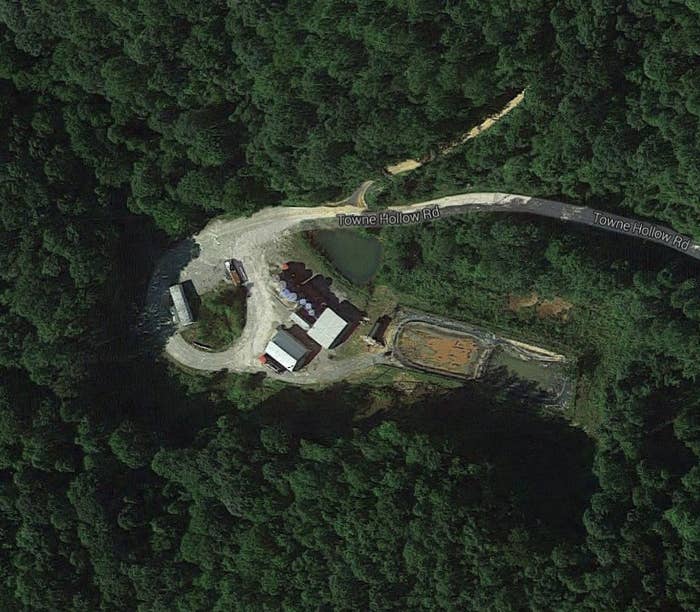
Dangerous levels of chemicals that can harm fertility flow downstream from a West Virginia fracking wastewater disposal facility, federal and academic researchers reported on Wednesday.
The finding raises questions about safety of similar deep disposal sites nationwide, several independent scientists said.
The contamination near Fayetteville, West Virginia, flows from a brook called Wolf Creek a few miles upstream of a New River drinking water treatment facility for 11,300 people. The disposal site, which includes a deep waste well, several holding ponds, and storage tanks, sits on a hillside above the creek, and has been the site of a fight over its permit, revoked in 2014 and then renewed by the West Virginia Department of Environmental Protection in August.
"I wouldn't drink out of Wolf Creek," University of Missouri toxicologist Susan Nagel, a study author, told BuzzFeed News. It’s unclear whether the contamination has reached residents’ drinking water, but that should be tested, Nagel said.
U.S. Geological Survey scientists invited Nagel, an expert on “endocrine disrupting” chemicals linked to switched genders in fish, lowered fertility in mice, and hyperactivity in children, to test water upstream and downstream of the fracking waste site. “We found levels of these endocrine disrupting chemicals high enough to threaten health,” Nagel said.
Nationwide, there are about 36,000 deep disposal wells that handle wastewater produced by hydraulic fracturing, or fracking, of oil and gas. These deep “injection” wells have emerged as an achilles heel in the fracking boom of the last decade, linked to 17,000 safety violations from 2007 to 2010 in a ProPublica survey, as well as earthquakes in Ohio, Texas, and Oklahoma.
The new study found high levels of 16 endocrine disruptors in stream samples taken adjacent to the deep disposal well, about 200 feet downstream of the facility.
“Basically you have high levels downstream and low levels upstream and in comparison streams,” Nagel said. The study can’t say whether the pollution comes from a cracked disposal well pipe, the retaining ponds on the site, or from the deep rock layers where the well has injected wastewater since 2007. “All we can say is that there is a problem downstream.”
Unpublished companion research led by USGS scientist Denise Akob shows that the sodium, chloride, barium, and strontium chemistry downstream in the creek match the profiles of fracking wastewater.
“What’s really striking and intriguing is that to my knowledge, no one has done this kind of upstream and downstream measurement at one of these disposal sites before,” environmental health scientist Nicole Deziel of the Yale School of Public Health told BuzzFeed News. “While this is just one well, this raises some really important questions about safety. It’s critical we learn how this contamination occurred.”
Seth Whitehead, a fracking industry advocate with Fracking in Depth, told BuzzFeed News by email that the concentrations of endocrine disrupting chemicals from the samples collected would have to be 40 times what was found for there to be a risk to humans. "None of the samples collected by the researchers contained EDC concentrations high enough to be deemed dangerous,” he said.
While the study shows contamination downstream of the disposal well site, it is just one site, environmental scientist Corrie Clark of the Energy Department’s Argonne National Laboratory in Argonne, Illinois, told BuzzFeed News by email. The question is whether the problem is just the disposal facility outside Fayetteville, Clark said, “or whether there are broader concerns with produced water management at other disposal facilities.”
The facility outside Fayetteville came to the attention of USGS in 2013, Akob told BuzzFeed News by email, because of pollution reports. “Ultimately we hope to provide a national perspective for these findings,” she said. “The [West Virginia] site will be only one of many sites we plan to include in our research.”
“The West Virginia Department of Environmental Protection just received a copy of this report and is still reviewing the findings,” Jacob Glance, a spokesman at the agency, told BuzzFeed News by email. As for the facility, he said, “the permits renewed in August are still in effect.”
UPDATE
This story has been updated with comments from Seth Whitehead.
